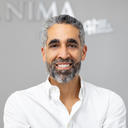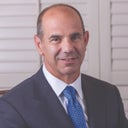I've been wanting a rhinoplasty for several years and I finally booked the surgery but since then, I've been feeling unsettled about my decision. I am grateful for my untouched, intact strong nose and have come to realise many off-putting realities about the surgery. I just found out that, surprisingly, 80% of septums are deviated. I don't know if surgery will make things better or worse for me especially as I have allergies. I don't want a dry nose, swelling, a traumatised nose or nosebleeds.
Answers (24)
From board-certified doctors and trusted medical professionals
Dr. Michael A. Persky, MD

Dr. Michael A. Persky, MD
Facial Plastic Surgeon
Answer
Dr. Anthony Bared, MD, FACS
Dr. Anthony Bared, MD, FACS
Board Certified Facial Plastic Surgeon
Answer
Dr. Nima Shemirani, MD

Dr. Nima Shemirani, MD
Board Certified Facial Plastic Surgeon
Answer
Dr. Alexander Donath, MD, FACS

Dr. Alexander Donath, MD, FACS
Board Certified Facial Plastic Surgeon
Answer
Dr. Kenneth Hughes, MD

Dr. Kenneth Hughes, MD
Board Certified Plastic Surgeon
Answer
Dr. Kien Ha, MBBS, MS, FRACS

Dr. Kien Ha, MBBS, MS, FRACS
Specialist Otolaryngologist
Answer
Dr. Ronald J. Edelson, MD

Dr. Ronald J. Edelson, MD
Board Certified Plastic Surgeon
Answer
Dr. Steven M. Denenberg, MD

Dr. Steven M. Denenberg, MD
Board Certified Facial Plastic Surgeon
Answer
Dr. Matthew Bridges, MD, FACS

Dr. Matthew Bridges, MD, FACS
Board Certified Facial Plastic Surgeon
Answer
Dr. Jeffrey Joseph, MD, FACS

Dr. Jeffrey Joseph, MD, FACS
Board Certified Facial Plastic Surgeon
Answer
More Rhinoplasty Questions
See all Rhinoplasty Q&AWE SEND PRETTY
EMAILS
What’s trending? Who’s turning heads? Which TikTok myths need busting? We’ve got you. No fluff, no gatekeeping—just real talk. Get our free, unfiltered newsletter.